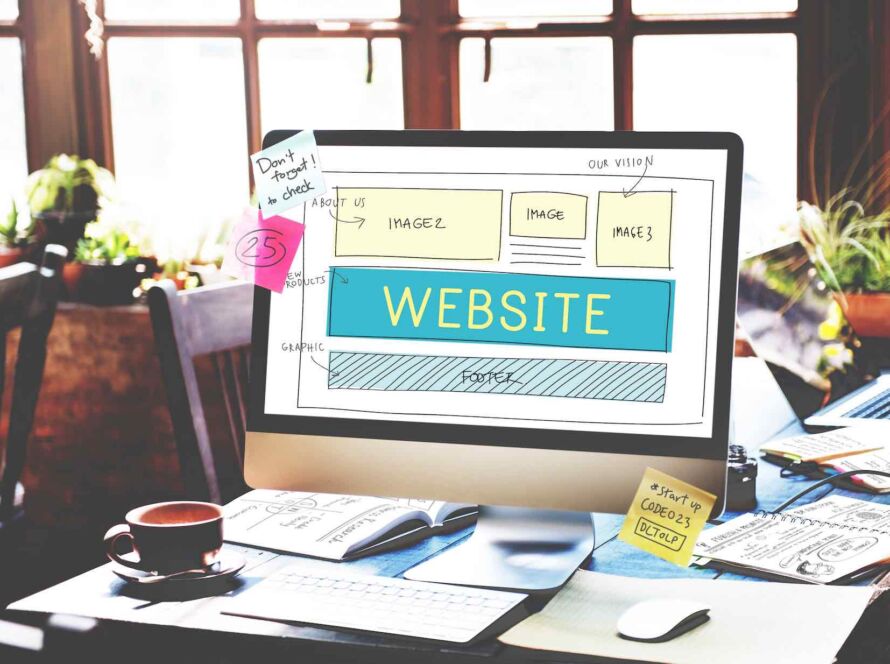COVID-19 exposed how vulnerable employers were to labor market shortages. As workers quit in their millions and baby boomers finally retired, the squeeze increased competition between employers. Even as the jobs market returns to normal, employers are still going after the best talent – especially with skills shortages remaining high.
As we enter an employee-centric climate, employer branding is more important than ever. How do your potential candidates see you? Would a talented individual choose you over your competitors? And what kind of message do you project?
Corporations can afford to pay their way out of the problem. But even they’ve had to adjust some of their employer branding to attract top candidates. For small- and medium-sized enterprises (SMEs), it’s not an option; it’s a necessity.
Table of Contents
1. What is Employer Branding?
In short, employer branding refers to how an organization presents itself to current and prospective employees. Just like branding to customers, it’s about creating a clear image and personality behind your brand.
Think of Apple, and you’ll picture sleek, reliable technology dedicated to professionals and creatives. However, Apple’s brand also transfers to its employees – store assistants are called geniuses, and their in-house teams place a heavy emphasis on design.
To paraphrase Jeff Bezos – employer branding is what employees say about you when you’re not in the room.
A big part of an employer’s branding is the Employee Value Proposition (EVP). Once, that was simply the money you earned, but it’s increasingly about other perks like gym memberships, streaming subscriptions, or just being part of a company that “makes a difference.”
For SMEs, your employer branding can help differentiate you from the crowd. Maybe you’ve got a strong reputation for innovation, training, and nurturing talent. Or maybe you’re renowned for your fun yet productive work environment.
Either way, boosting your employer brand will increase productivity, reduce absenteeism, and slash your churn rate. It secures you exceptional talent simply because of your reputation.
2. Pros and Cons of Employer Branding for SMEs
Nothing in life is perfect. Employer branding sounds like common sense, right? Why wouldn’t a brand want to ensure all employees, future and past, value their employer? Well, consider McDonalds. They’ve spent millions of dollars creating training programs, flexible working options, opportunities for career progression, and personal development.
In fact, McDonalds runs several career schemes, including the Finance Graduate Scheme, where you’ll earn a fully funded accounting qualification. Regardless, McDonalds still has a reputation of being staffed by burger flippers who’d rather do anything else.
Let’s consider the pros and cons of employer branding for SMEs:
2.1. Pros of Employer Branding for SMEs
2.1.1. Attracts Quality Talent:
A strong employer brand can help SMEs compete with larger companies in attracting top talent. Candidates look for companies with good reputations, and a solid brand can make an SME stand out.
2.1.2. Reduced Hiring Costs:
A well-established employer brand can reduce the cost-per-hire. When potential employees already know and are attracted to a company’s brand, less money needs to be spent on outreach and recruitment marketing.
2.1.3. Increased Employee Retention:
Employees who believe in their company’s brand and feel aligned with its values will likely remain loyal for longer, reducing turnover rates and associated costs.
2.1.4. Positive Company Culture:
Strong employer branding can foster a positive workplace culture. When branding highlights a company’s values and mission, it attracts employees who share those values, leading to better teamwork and overall morale.
2.2. Cons of Employer Branding for SMEs:
2.2.1. Resource Intensive:
Creating and maintaining a strong employer brand can be costly and time-consuming for SMEs with limited resources. The initial investment in branding campaigns, events, and promotional materials can strain limited budgets.
2.2.2. Risk of Negative Publicity:
If an SME doesn’t live up to its brand promises, it can lead to negative feedback and reviews on platforms like Glassdoor or Indeed. This can harm the company’s reputation more than having no branding at all.
2.2.3. Difficulty in Changing Perception:
Once established, changing or evolving an employer brand can be challenging. This can be limiting for SMEs that need to pivot their business model or strategies frequently. They might find themselves constrained by a brand image that no longer aligns with their current direction or goals.
3. How to Build an Employer Brand
Whether you intended to or not, you’ve got a brand. Whatever your employees and candidates say about your brand, whatever you currently project – intentional or unintentional – is your brand. That means SMEs who fail to control and market their brand are at risk of disgruntled past employees and other hearsay and gossip.
The only solution is to build your employer brand in-house. How? Here are some simple steps to follow to create an attractive, reputable brand:
3.1. It’s all about your values
A brand is sort of like a company’s personality. It guides how we expect a company to behave and communicate. That should be influenced and determined by your core values.
Ask yourself: What do we believe in?
Do you prize creativity and individuality? Are you all about a collaborative culture where teamplay is king? What about your social ethics? Where do you rank on environmentalism, charity, or politics?
Tread carefully when thinking about your core values. While branding will inevitably put some people off (you can’t appeal to everybody), it should always attract your target market. If you think a particular issue divides more than it helps, maybe avoid it for now.
3.2. Encourage employee reviews
Steve Jobs got to the point: “A brand is simply trust.” Or rather, it should be.
See hundreds of 5-star reviews on a product, hotel, or restaurant, and we add it to our must-try list. Why? Because we trust the people who left the reviews – and if they liked it, we probably will, too.
Similarly, employee reviews help attract top talent to your SME. Sites like Glassdoor and Indeed are often a candidate’s first port of call when prepping for an interview (or even just submitting their application). A single bad review can put some people off – and requires a lot of positive feedback to counteract.
You should ask satisfied employees, past and present, to leave you honest company reviews. Not only does it bolster your company’s reputation, but it also helps you enhance the employee experience from now on.
3.3. Create a narrative
People are wired to like stories. It’s why every advert spins a mini tale. Your brand is also a kind of story. Where did your company begin? What challenges have you overcome? What are your proudest moments? Sharing this journey creates an emotional connection, making it easier for potential employees to relate to and invest in your company’s future.
Potential candidates can then see themselves as part of this narrative – as belonging to something bigger.
Craft a compelling narrative that showcases your company’s evolution, mission, and vision. Highlight the milestones and share anecdotes that epitomize your company’s spirit. When employees and candidates resonate with your story, they are more likely to be engaged, committed, and passionate about contributing to the next chapters. Remember, a well-told story can be the cornerstone of a memorable and lasting brand.
3.4. Work With Influencers
Most non-writers have never heard of Gary Halbert. Nor do most non-techies know of Steve Wozniak. Every industry has its legends – celebrities of a small sphere.
While they won’t get stopped at the grocery store, they can skyrocket a small business’s brand. That could be penning a think piece for the company, performing some consulting work, or appearing in an advert.
Social media influencers, in particular, come with several benefits, including a built-in audience, solid connections, and recognizable brands. Even micro-influencers can boost your brand, whether that’s launching a podcast for your business or becoming a brand ambassador.
3.5. Prioritize Internal Engagement and Training
No brand ambassador will work, as well as a satisfied workforce. External PR and marketing can help cast a wide net, but they’re not the heart and soul of your brand – your team is.
Start with a comprehensive onboarding program that immerses new hires in your company culture. If you’ve got a particular way of doing things, now is the time to show it off. Then, use regular workshops, town hall meetings, and feedback sessions to keep the communication lines open.
You want your employees to represent your brand accurately? Give them the tools to do so. Whether they’re at a conference, on social media, or having a casual conversation with friends, get them excited about what they do and where they work.
You can’t fake passion – but incentives don’t hurt. Reward employees who exemplify your brand values and create internal role models. Do this, and all other aspects of your employer branding will come naturally.
Closing Thoughts. Employer branding isn’t just another buzzword – it’s a critical strategy to attract top talent in a competitive landscape. Remember, it’s not just about attracting; it’s about retaining, engaging, and fostering a culture that markets your brand when you’re not in the room.
For SMEs, that’s a bold challenge – with fewer resources and a smaller voice, you’ve got to be smart in how you build your brand. However, get it right, and you can put your business on the map, attracting and retaining talent from far and wide.
Learn more about Employer Branding and what an Employer Brand is.
Sources:
https://www.salesforce.com/uk/blog/2022/02/employer-branding-for-sme.html
https://www.gartner.com/en/human-resources/insights/employee-engagement-performance/employee-value-proposition
https://linkhumans.com/sme-employer-branding/
https://hiring.careerbuilder.co.uk/blog/employer-branding-for-small-and-medium-sized-companies-too
https://www.forbes.com/sites/forbescoachescouncil/2020/12/14/how-to-get-hired-in-a-highly-competitive-job-market/?sh=53222827138b



